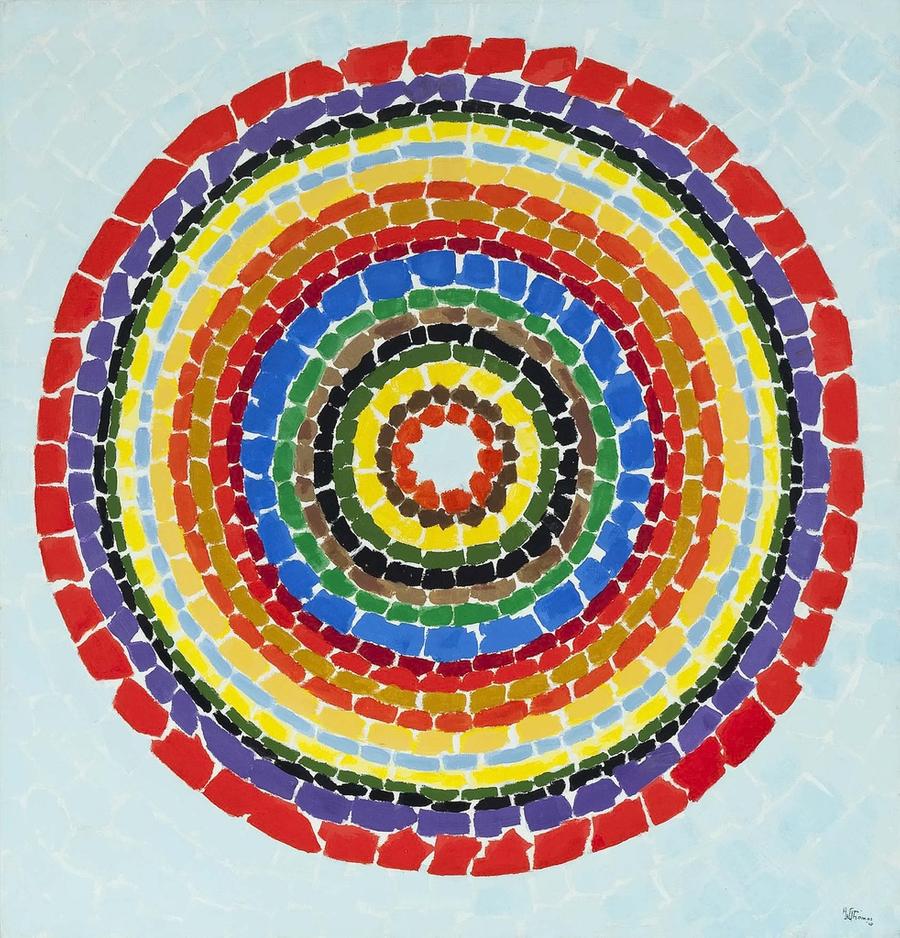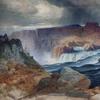Recent Acquisitions on View in Reinstalled 1940s to Now Art Gallery at Crystal Bridges Museum
- BENTONVILLE, Arkansas
- /
- March 20, 2015

In late March, Crystal Bridges Museum of American Art will reopen its 1940s to Now Art Gallery, which recently has been closed for the de-installation of the museum’s acclaimed exhibition State of the Art: Discovering American Art Now.When the gallery reopens, it will feature 71 works spanning the decades from 1940s to the present, including a number of notable recent acquisitions.
“This debut represents the first major reinstallation of a permanent collection gallery since the museum’s opening in November 2011,” said Crystal Bridges Executive Director Rod Bigelow. “Recently acquired artworks exhibited along with some of our visitor favorites offer the opportunity to share new insights into the story of America as seen through its great works of art. We’re pleased to offer this broader context and new works to engage and intrigue visitors.”

One of the newly acquired works in the re-installation is Helen Frankenthaler’s Seven Types of Ambiguity (1957). Working with the Helen Frankenthaler Foundation, New York, Crystal Bridges has acquired five works from the collection of the late artist (1928—2011), who was eminent among the second generation of postwar American abstract painters and is widely credited for playing a pivotal role in the transition from Abstract Expressionism to Color Field painting. In addition to Seven Types of Ambiguity, these include two major paintings: Untitled (1951) and Pink Bird Figure II (1961); and two works on paper: The Bullfight (1958) and Untitled (1980). “We are delighted to have these important works join our collection, and eager to begin to share them with the public,” said Bigelow.
Elizabeth Smith, executive director of the Helen Frankenthaler Foundation, stated, "The Foundation is pleased that these works by Helen Frankenthaler have become part of the distinguished collection of American art at Crystal Bridges. As a newly active foundation, we think it is especially fitting to launch our program of placing important artworks in museums in collaboration with this newly established institution, which is committed to collecting and exhibiting outstanding works of art and prominent in its serious attention to the study and appreciation of American art."
Smith also explained that Helen Frankenthaler retained important works throughout her career as an artist. She bequeathed these to the Foundation, which has determined to make selected examples available for acquisition to institutions interested either in strengthening their representation of her art, or in representing it for the first time, as is the case with Crystal Bridges, toward the goal of furthering the Foundation's educational and charitable missions to support the arts.
Crystal Bridges Curator Chad Alligood said, “Helen Frankenthaler played a major role in the story of American art in the 20th century. Seven Types of Ambiguity shows us why: its pioneering technique and singular beauty serves as a lynchpin for the reinstallation of our postwar collection. Our visitors will see it exhibited alongside works by Grace Hartigan, Jackson Pollock, Kenneth Noland, and other contemporaries, offering an expanded look at the development of American art.”
Other recent acquisitions debuting in the gallery reinstallation include Robert Rauschenberg’s The Tower (1957), Ruth Asawa’s Untitled, (ca. 1958), Allan D’Arcangelo’s My Uncle Whiskey’s Bad Habit (1962), Vija Celmins’s Untitled (Ham Hock) (1964), Nancy Grossman’s Car Horn (1965), Alma Thomas’s Lunar Rendezvous—Circle of Flowers (1969), Roni Horn’s When Dickinson Shut Her Eyes No. 859: A Doubt If It Be Us (1993), Mark Tansey’s Landscape (1994), and Charles LeDray’s Rainbow (2012-2014). Two gifts will also debut: Brice Marden’s For Carl Andre (1966) from an anonymous donor and Nancy Graves’s Fayum-Re (1982), gift of Agnes Gund.
“These new acquisitions help us tell an expanded story of America that now unfolds in this gallery,” said Alligood. “For example, our collection already features a number of iconic Pop Art paintings from artists such as Andy Warhol and Roy Lichtenstein that demonstrate the influence of 1960s pop culture. Now, with the addition of groundbreaking sculptural works from this period—Robert Rauschenberg’s The Tower and Nancy Grossman’s Car Horn—we are also able to explore artists’ use of unconventional, everyday materials, showing how other American artists responded to the explosion of consumer goods during the postwar economic boom. The re-installation focuses on key moments in American history—and how works of art both reflect and shape our understanding of that history and ourselves.”
“From Donald Judd to Roni Horn, Alma Thomas to Kerry James Marshall, that history includes many more voices,” continued Alligood. "Given greater chances to flourish, artists from diverse backgrounds begin to play a larger cultural role in the latter part of the 20th century. Their artworks reflect our challenges, our successes, and our ongoing debates. Above all, they can show us where we have been—and spark conversation about what comes next in our American story.”
Portions of the gallery will open on March 20, with the entire gallery open by the end of March. Crystal Bridges’ permanent collection galleries feature five centuries of American art, from colonial times to current day. There is no cost to view the museum’s collection, which is on view year-round.
















